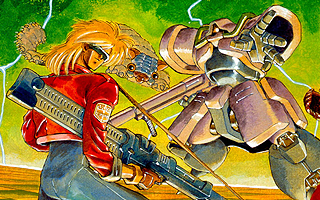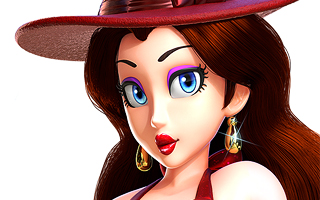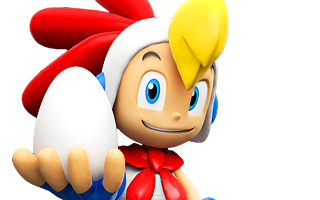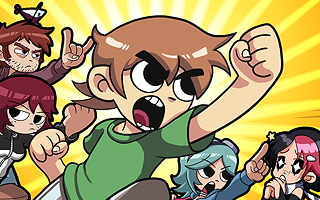ColecoVision
Top 10 Best ColecoVision Games of All Time!
The console market was oversaturated in the 1980s, and Coleco found competition from Atari, Bally, Emerson, Fairchild, GCE, Magnavox, Mattel, Sears, Tandy, and VTech among others. At a time where consumers were overwhelmed by choice, the ColecoVision stood out by offering experiences that were more in-line with what you would get in the arcades. After securing exclusive rights to Nintendo’s Donkey Kong, Coleco made the bold decision to include it as a pack-in title. This move put the ColecoVision on the map and gave everyone an immediate reason to buy the console. More arcade ports would follow, and the ColecoVision quickly rose to the top of the sales charts. It sold a million units within its first year, but it sales slowed considerably when the video game console market crashed in 1983. Coleco withdrew from the video game market in 1985, just in time for the NES to arrive. The ColecoVision wasn’t the success it could have been, but Coleco had another meal ticket as the manufacturer of Cabbage Patch Kids dolls.
10
Boulder Dash
1984

In Boulder Dash, players assume the role of a prospector who digs through dangerous caves in an attempt to retrieve precious diamonds. The caves are inhabited by all sorts of snakes, slimes, amoebas, and exploding fireflies, but – as the title suggests – the biggest obstacles to overcome are the giant boulders. The massive rocks can be used to squash enemies, but they can just as easily bury you if you’re not careful. The later levels of the game require lightning-quick reflexes and also require players to think ahead to avoid being buried in an avalanche. The perfect balance between reflexes and logic makes Boulder Dash appeal to a wide range of gamers and also makes it one of the most addictive games of its era. Even though the ColecoVision port is marred somewhat by choppy scrolling, it still captures the magic of its arcade and PC brethren. Raiders of the Lost Ark taught us that running away from boulders is exciting, and Boulder Dash takes this premise to its logical extreme.
9
BurgerTime
1984

Many of the best games on the ColecoVision were ports of popular arcade games. BurgerTime is yet another example. In the game, players take on the role of a busy chef who has to navigate through a series of mazes with the eventual goal of assembling giant hamburgers. He does this by walking over various fixings to drop them down onto trays below. While assembling these giant hamburgers, players will find opposition in the form of animated sausages, pickles, and eggs. You can temporarily stun enemies by shaking pepper on them or eliminate them altogether by causing the giant ingredients to land on them. The enemies are extremely relentless though, and because the pepper is in short supply, you will have to use strategy and avoid confrontation whenever possible. BurgerTime is an extremely simplistic game, but it is also highly addictive. If the public only knew how difficult it was to assemble burgers, fast food workers would get more respect.
8
Pitfall II: Lost Caverns
1984

Pitfall II was arguably the single most technically-advanced Atari 2600 game ever released. Features like “animated water” and “background music” simply didn’t have the same gravitas on the ColecoVision as they did on the 2600, however. Even without the “wow factor” that the 2600 version had, Pitfall II is still a groundbreaking adventure game. In an era before level passwords and save files, Pitfall II used an innovative “checkpoint” system that allowed players to progress through the game without having to start from the very beginning every time they died. It was one of the largest games of its era – it’s nearly twice as large as the first Pitfall! – and there’s a lot of variety to be seen. During the adventure, players will jump over deadly scorpions, swim through eel-infested waters, and use helium-filled balloons to take to the skies. The graphics obviously could have been improved for the Coleco version, and the game clearly doesn’t push the console as hard as it could have. It’s a great game nevertheless, and hunting for treasure in the jungle is fun no matter how you look at it.
7
Mr. Do!
1983

Mr. Do! is a simple and addicting maze game with a few similarities to Namco’s Dig Dug. The game stars an ambitious, shovel-touting clown who aims to collect as many cherries as possible. To achieve this goal, players will effortlessly dig their way through walls and ceilings and essentially create their own paths in the process. There is a catch, however. Once the player clears a path, enemy characters can also use these paths. If players are not mindful of where they are digging, their enemies will be able to track them down with relative ease. Of course if things get too heated, players can always throw “power balls” at their enemies or attempt to squash their rivals by pushing giant apples onto them. The ColecoVision is very faithful to the arcade game with regards to its look and feel, but the home version wasn’t quite as colorful. I appreciate how the background colors change from one stage to the next, but the central character looks more like a ghost than a clown because the developers only used a single color for his sprite. This is a relatively minor issue, however, and the gameplay holds up remarkably well.
6
Donkey Kong Jr.
1983

When Mario made his video game debut in 1981’s Donkey Kong, he was instantly heralded as a hero for scaling various construction sites to rescue his girlfriend from the giant ape. It wasn’t until Donkey Kong Jr. was released that Mario’s real intentions became clear. Mario is now holding Donkey Kong captive, and it’s up to Junior to rescue his father. Donkey Kong Jr. didn’t have the same impact on the industry that its predecessor did, but the game was better in almost every way. Evidently, Junior is a much more agile protagonist than Mario was, and his enhanced climbing abilities added a lot of depth to the “walking and jumping” formula that Mario championed. Donkey Kong Jr. will have to climb vines, jump on springboards, ride conveyors, and avoid electric fields in order to save his father from the evil Mario. The ColecoVision version of Donkey Kong was an excellent port in its own right, but Donkey Kong Jr. is even more faithful to its source material. It ranks as one of the best-looking games on the console, and all four stages from the arcade game made it into the ColecoVision port.
5
Frogger
1983

Frogger is a timeless arcade game in which players attempt to guide frogs home by crossing busy freeways and navigating through hazard-filled rivers. The game is pretty straight-forward and the action takes place on a single screen, but there are several ways to die in the game. Your frogs can be run over by cars, get attacked by snakes, accidentally jump into the river, get carried off the screen on a floating log, fall into the river while riding on the back of a turtle, jump into the mouth of a hungry alligator, or simply run out of time. Despite its simple premise, players have to be mindful of their surroundings. Frogger ranks right alongside early classics like Pac-Man and Donkey Kong, and the game apparently played a big role in George Costanza’s youth. The ColecoVision version is a near-perfect version of the arcade hit and one of the absolute best games on the system. Very few games are as easy to jump into as Frogger is.
4
Centipede
1983

Centipede is a classic arcade game that puts a new twist on the shoot ’em up genre. Instead of taking place in outer-space, Centipede is set in a garden. Rather than shooting down swarms of insect-like alien creatures, players are tasked with shooting down swarms of actual insects! For reasons I don’t fully understand, Centipede was the first arcade game to amass a significant female player base. I guess girls just couldn’t turn down the opportunity to kill centipedes, spiders, and fleas. Like other typical early ’80s arcade games, the gameplay in Centipede basically revolves around moving and shooting. The controls themselves are highly responsive, however, and the lightning-fast pacing really help the game stand out. The arcade game used a trackball, so it might take a while to adjust to the ColecoVision’s controller. Thankfully, the home version also supports Coleco’s “Roller Controller” which does a fantastic job of recreating the arcade experience. The fact that Centipede exists on the ColecoVision at all is pretty incredible. Atari had multiple systems of their own to support, so it was nice to see one of their flagship titles released on a competing console.
3
Miner 2049er
1983

In Miner 2049er, players assume the role of a Mountie named Bounty Bob and are tasked with venturing into abandoned nuclear mines in pursuit of a treacherous outlaw. The mines are filled with numerous radioactive creatures, and Bob also has to be mindful of a time limit in each stage. Bob has to thoroughly inspect each section of the mine before he can proceed to the next stage, and a surprising amount of strategy is required if he wants to finish his investigations within the allotted time. The game features an impressive eleven stages, and Bob will come across a wide variety of obstacles during his adventure. In addition to the expected ladders, chutes, and crushers, Bob will also have to deal with futuristic equipment like matter transporters. (I guess that’s where the “2049” part comes into play.) The gameplay itself is almost entirely based around jumping mechanics, but the levels are designed in a way that requires players to plan ahead. At first glance, it would be easy to write Miner 2049er off as a Donkey Kong knockoff, but it puts a unique twist on the genre and is a lot more fun than the goofy visuals would suggest.
2
Galaxian
1983

Single-screen, space-based shooting games were a dime-a-dozen in the late ’70s and early ’80s, but Galaxian expanded on the Space Invaders formula in several meaningful ways. For instance, the game was noticeably more colorful than other games of the era. In fact, the arcade version of Galaxian was one of the first games to feature multi-colored animated sprites. Explosion effects and a scrolling background also helped Galaxian stand out. Ultimately, it was the gameplay itself that really separated Galaxian from other games in the genre. The enemies in Galaxian are more-varied than the Space Invaders aliens, both in appearance and behavior. Instead of simply shooting the player, the enemies will occasionally dive down at them with kamikaze-like maneuvers. This added an element of drama to the game and prevented the gameplay from becoming too repetitive or monotonous. The enemies in the Coleco version are more aggressive than they were in the arcades, and the gameplay is noticeably faster as well. As far as ColecoVision arcade ports go, they don’t get much better than Galaxian.
1
Gorf
1983

Gorf (an apparent acronym for “Galactic Orbiting Robot Force”) is arguably the most ambitious space shooter of the early ’80s. The most impressive aspect about the game was that it provided players with four distinct modes of play. The first mission is heavily inspired by Space Invaders and challenges players to shoot down numerous alien ships that are descending to the planet’s surface. In this stage, players are protected by a parabolic force field that is gradually deteriorated by enemy fire. The second mission takes the fight to outer-space and pits players against enemy ships that fly in various formations. Each formation is made up of ships that fire lasers, ships that dive-bomb the player, and deadly space robots. The third mission is set near a space vortex, and bombards players with enemy fighters that fly outward from the center of the screen. The fourth (and final) mission challenges players to take down the alien Flag Ship and was one of the first examples of a true boss fight in a video game. The variety in Gorf is greatly appreciated, and the core play mechanics are extremely solid. Unlike most shooters from the era, players have the ability to move their ship both horizontally and vertically. This adds an element of strategy. (Moving closer to enemy fighters potentially allows you to defeat them faster, but it also gives you less time to react to enemy fire.) A few concessions had to be made in order to bring the game from the arcades to the ColecoVision. Scaling sprites and synthesized speech were removed due to technical limitations, and a fifth mission that was based on Galaxian was removed due to copyright concerns. With that said, Gorf is still a worthy translation and one of the most varied shooters of its generation.





Do you agree with this list? Let us know what you think by leaving a comment below. Your opinion matters!